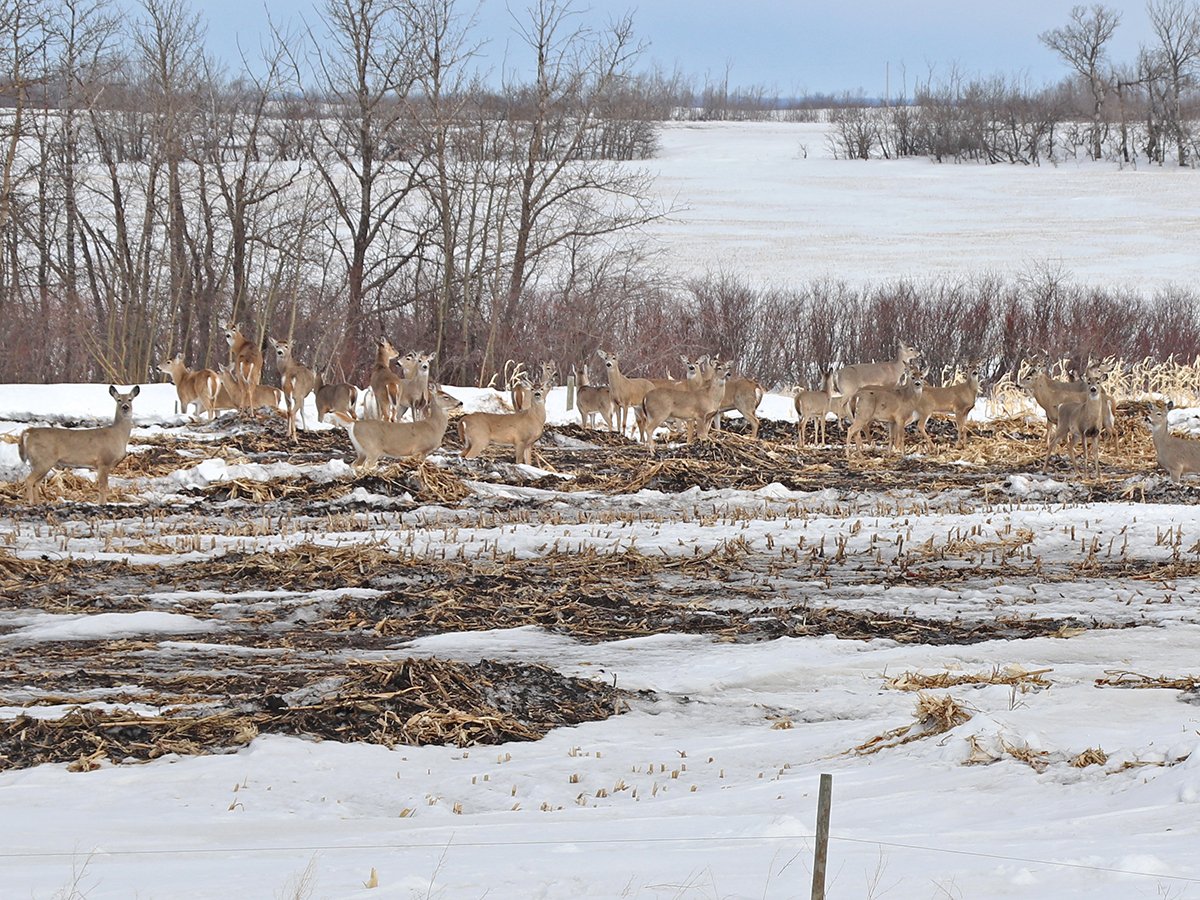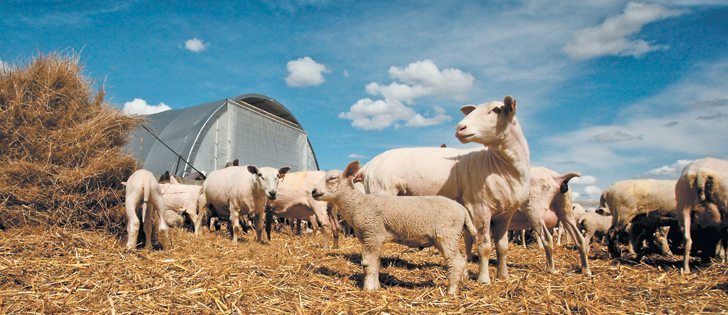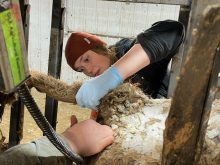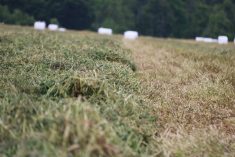Thin ewe syndrome affects most flocks at one time or another, says sheep specialist Dr. Lynn Tait of OC Flock Management.
The affliction is defined as a production-limiting disease that affects performance and profitability but is not necessarily acute.
“They’re not always obvious, and chronic in nature,” Tait said during a Feb. 8 Alberta Lamb Producers webinar.
Instead, they are slowly degenerative types of disease that are not easily treated. The big four in sheep are:
- maedi visna
- Johne’s disease
- caseous lymphadenitis
- parasitism
Read Also

Foot-and-mouth disease planning must account for wildlife
Our country’s classification as FMD-free by the World Organization for Animal Health has significant and important implications for accessing foreign markets.
Maedi visna
Maedi visna is a virus usually characterized by a hard udder that doesn’t release milk when nursed. It is often confused with mastitis, but true “hard bag” produces no heat, infection or apparent pain in the animal. The condition is permanent.
“It just looks like a full udder, but there’s nothing in it,” said Tait.
“This is a disease that slowly de-stroys the lung tissue.”
Lambs can be infected in utero and after nursing from an infected ewe. The animal has more trouble breathing as it ages. Maedi visna can be confirmed post mortem by examining lung tissue.
However, it can also be confirmed in living animals through a blood test, which detects the presence of antibodies, said Tait.
Tests should be done on animals older than one year to provide reliable results, and they should not be taken 45 days before or after lambing.
Johne’s disease
Johne’s disease is caused by a mycobacterium that invades the gut wall, causing it to thicken. Ewes gradually lose weight because they do not receive full nutritional value from their food.
“Johne’s disease is what we call the tip of the iceberg,” she said.
“The sheep that you actually see in a flock that are clinically thin and show evidence of Johne’s disease are a very, very small portion of the number of animals in the flock that are actually infected.”
Tait said diarrhea isn’t a symptom of Johne’s in sheep as it is in cattle. In fact, sheep may show few clinical signs, other than thinness and gradual deterioration.
Fecal tests can detect DNA of the bacteria that cause Johnes, but sheep do not necessarily shed the bacteria at all times, so multiple tests may be necessary to prove or disprove presence of the disease.
Blood tests are not recommended as a diagnostic tool because they are unreliable.
“It’s not a great test in cattle, and it’s an extremely poor test in sheep and goats,” said Tait.
A post mortem examination of the intestines can confirm Johnes.
Caseous lymphadenitis
Caseous lymphadenitis is also called pseudo tuberculosis, said Tait. It affects the lymph nodes but can spread through the bloodstream and cause liver abscesses.
Producers may notice swelling of lymph nodes on the sides of the head below the ear and at points of the shoulder. Less common are swollen nodes in the hind leg or flank.
“One of the big issues with this disease is that you will see many areas that get infected with internal abscesses, and you can’t see those,” she said.
“There is no cure for the infection, so that is one of the challenges.
There is a vaccine but it is not available in Canada.
Contents from the swollen nodes can be analyzed to diagnose caseous lymphadenitis. A blood test is useful only if the animals have never been vaccinated for the illness.
Ewes with caseous lymphadenitis will have internal abscesses at post mortem.
Parasitism
Tait said she sees more parasitism now in her clinical practice, and resistance to common treatments is becoming a larger concern.
Parasites can be detected through fecal examination. Timing is key because some parasites go dormant in winter and may not appear in feces.
Tait recommended using production records to help producers recognize chronic illness and treat or cull accordingly.
“I think that production records are underestimated in helping to determine if you have underlying problems in the flock,” she said.
“Often without really obvious clinical signs of the disease, we will still see drops or losses or failure to reach production goals.”
She also recommended post mortems, despite the expense.
“Post mortems are my favourite diagnostic tool. I think that you get more return on that than just the cash for your thin animal.”
Tait told producers to monitor their flocks and consider paying for tests if they plan to manage confirmed illnesses.
“I truly believe that, from a management standpoint, it’s no longer acceptable to just ignore the problem (of thin ewes),” she said.
















